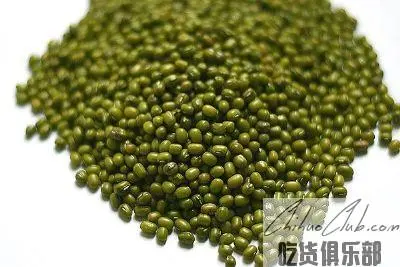
Mingguang Mung Bean
-
Update date::
-
Date of protection::
-
Protected range:The scope of Mingguang Mung bean is the administrative area of Mingnan Street, Mingdong Street, Mingxi Street, Guandian Town, Sanjie Town, Shiba Town, Tunxi Town, Suxiang Town, Qiaotou Town and Gupei Town of Mingguang City, Anhui Province. .
-
Category:
Mingguang Mung Bean, in fact, was not the title in the early days. At that time, because of its bright color and green color, it was called bright and bright mung bean, referred to as Ming Green. The main producing areas of Minglu are in Hengshan, Guandian of Mingguang, Chihe and Sanhe Townships in Dingyuan, and later expanded to Zhangbaling, Shiba, Tunxi, Qikou and other places. The distribution center of Minglu is mainly in the tube shop. Due to the influence of the war, the management of the grain store was affected. Around 1945, Mingguang’s people in the food business gradually increased. With the increase of food and transportation and the convenience of transportation, Mingguang replaced the tube store and became a new green The distribution center, for a long time, the mung bean distributed in Mingguang is gradually called the Mingguang mung bean.
One of the famous agricultural specialties in Mingguang City, Zhangzhou City is a well-known Anhui famous specialty. It has been exported to Singapore, Malaysia, Japan and other countries since it was exported to countries around 1915. It has won many gold medals at domestic and international famous and special products exhibitions. , enjoys a high reputation in the domestic and foreign markets. Mingguang Mung Bean is rich in nutrients, and protein accounts for about one-fifth of its total nutrients. In addition, there are a lot of fats, carbohydrates, dietary fiber, vitamin E and calcium, iron, zinc and other minerals. Summer heat, hot and clear fire is the most prominent effect of mung bean, often eat mung bean, has a good therapeutic and auxiliary effect on cardiovascular and cerebrovascular diseases such as hypertension and arteriosclerosis, as well as chronic diseases such as diabetes and nephritis. Mung bean also has the effect of lowering cholesterol. . Quick cooking of mung bean soup (30~40 minutes) 1. Wash the mung bean into the pot, the amount of mung bean can be flattened at the bottom of the pot; 2. Add boiling water to the green beans 2 cm; 3. cook over high heat To the water almost boiled (pay attention to prevent sticking pot); 4. Add a lot of boiling water (add some water to see personal preferences, some people like the proportion of green beans more, some people like soup more), cook for 7-10 minutes on medium heat ; 5. Add rock sugar (how much depends on personal preference), and cook for 7-10 minutes on medium heat or low heat. The pros and cons of the sensory identification of mung bean depends on its appearance and color. The high-quality mung bean skin is waxy, the grain is full and even, rarely broken, no insects, no impurities. Sub-quality, inferior mung bean color is dim, grain size is uneven, fullness is poor, broken, insects, impurities. Second, smell the smell. Give the mung bean a sip of heat, then immediately smell the smell. The high quality mung bean has a normal clear fragrance and no other odor. Sub-quality, inferior mung beans with unusual smells such as odor or mildew.
Mingguang Mung Bean Quality Technical Requirements 1. Ming series one (Ming series one) 2. Site conditions The soil type is yellow clay and white soil. The texture is loam and sandy loam. The soil pH is 5.5-7.0, and the organic matter content is ≥1%. The salt content is below 0.2%. Third, cultivation management (A) fertilization Apply organic fertilizer per hectare ≥ 15000kg. (2) Sowing spring sowing: In mid-April, if the film cultivation is used, it can be 10 to 15 days in advance; Summer sowing: in July 7th - August 10th; Seeding method: ridge and hole sowing, each point 2~3 Seeds, seedlings per plant; planting density: planting density of spring planting ≤ 120,000 plants / hectare; planting density of summer planting ≤ 150,000 plants / hectare. 4. Harvesting and storage Harvested when the color of the pods became black and mature in August; dried until the water content of the beans was 10-14% and stored. V. Quality characteristics (1) Sensory characteristics Appearance color is green, no waxy, shiny; skin is thin, the skin is not completely separated when cooked, the pedicle is adhered to the meat, the skin is scattered to plum-like shape; the soup is not turbid; The palate is fragrant, the beans are strong, refreshing and slightly sweet. (B) physical and chemical indicators 1. Thousands of grains weight ≥ 45g, protein ≥ 20g / 100g. 2. Hygiene requirements: (1) Health indicators shall be implemented in accordance with GB 2715 and relevant state regulations. (2) For other purposes, it shall comply with relevant national standards and regulations. (3) Plant quarantine shall be carried out in accordance with relevant national standards and regulations.
Apply to:
Producers within the scope of Mingguang mung bean production may submit an application to the Mingguang Municipal Market Supervision Administration for the use of the “Special Mark for Geographical Indication Products”, which shall be reviewed by the Anhui Provincial Bureau of Quality and Technical Supervision and announced to the General Administration of Quality Supervision, Inspection and Quarantine for approval. The inspection organization of Mingguang Mung Bean is selected by the Anhui Provincial Bureau of Quality and Technical Supervision in the inspection institutions that meet the qualification requirements.